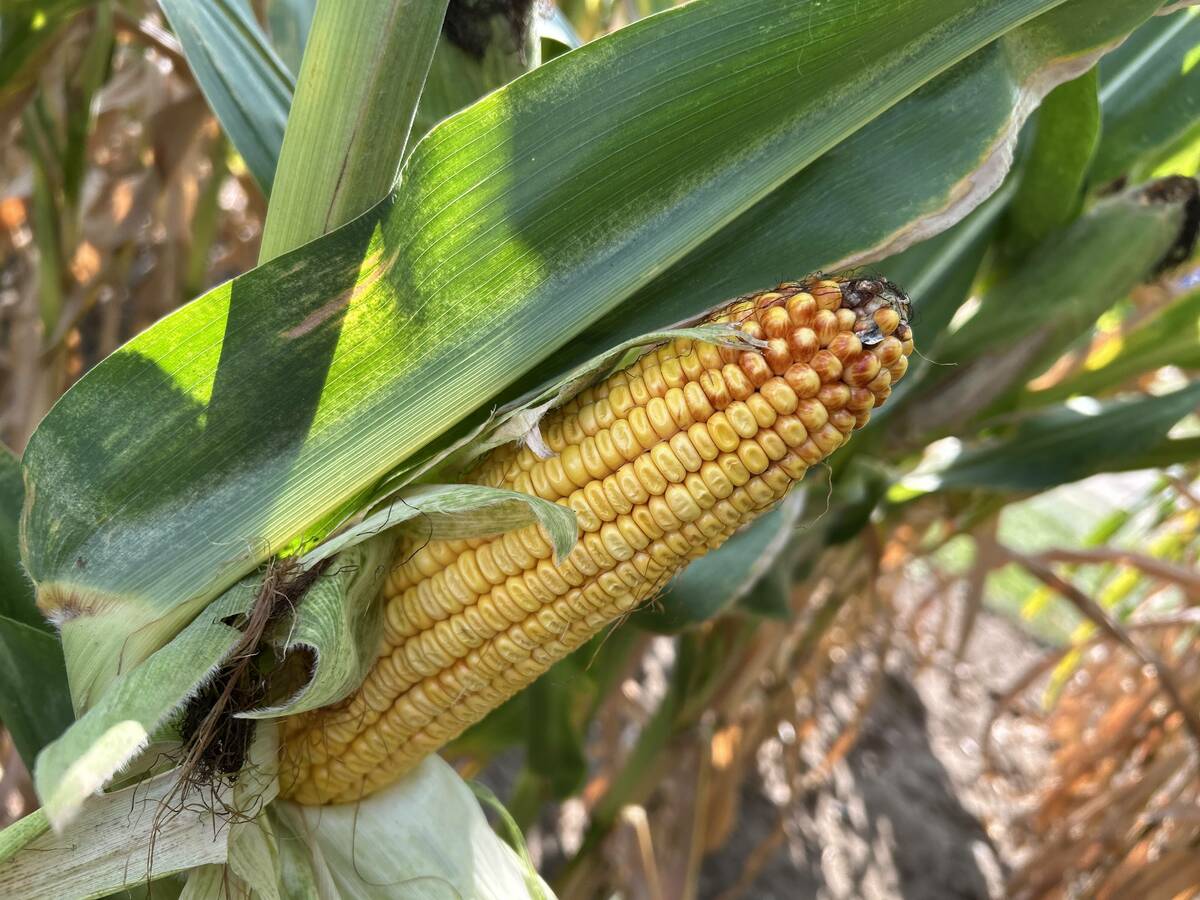Fed cattle drop
Fed cattle average prices were $1.30 per hundredweight lower on steers and $1.20 lower on heifers last week, Canfax said.
Canadian packer activity was sluggish with smaller kills and reduced needs that were blamed on negative margins and labour shortages.
About 18,600 head traded, 24 percent smaller than the week before.
Alberta prices on Jan. 26 were steers $93.45 per cwt., flat rail $156-$157.20 and heifers $93.80-$94.30, flat rail $156-$157.50.
Canfax said the industry has been current often enough in the past year to hold out for higher prices but today’s heavier carcasses suggest that tactic may not succeed now.
Read Also

Crop estimates show mixed results
Model-based estimates used by Statistics Canada showed the 2025/26 crop year has seen increases in canola, corn for grain, oats and lentils production while seeing dips in spring wheat, durum wheat, soybeans and barley in comparison to 2024/25.
Steer carcasses last week were 31 pounds heavier than the same time last year.
If Canadian prices aren’t satisfactory, sellers need to look at export options, Canfax said.
Beef movement sluggish
U.S. cutouts lost ground last week with the Choice down $2.75 US and Select down $1, Canfax said. At current kill levels there is ample beef in the pipeline but the boxed load count was up 12 percent from the week before.
Canadian beef buyers are doing business only when they need to. Even with smaller Canadian kills so far in 2006, there appears to be plenty of beef in the system. Calgary wholesale pricing is steady for delivery this week with steers at $160-$165 Cdn.
Light feeders rise
Feeder cattle price averages followed the previous week’s trend, although volumes were down eight percent at about 34,000 head, said Canfax.
Light steer calves 300-500 lb. saw the strongest increase, gaining $4.50-$5, while steers 500-700 lb. traded $1.25-$2.50 higher. Light heifer calves (300-500 lb.) rose $2.25-$2.75 and 500-700 lb. heifers were steady to $1.50 stronger.
Heavier feeders saw lower prices with steers 700-900 lb. and heavier $2-$3.25 lower, while heifers 700-900 lb. and heavier fell 50 cents -$2.25.
Slaughter cows fell $2 to average about $30 per cwt. Butcher bulls were also $1.50 lower, averaging $29.25 per cwt. With the 850 lb. steer Canada-U.S. basis at around $14.75 under, feeder cattle will stay in Canada.
Steady to larger volumes are expected in coming weeks, adding downward pressure on heavier feeder cattle prices, said Canfax.
Calf trade is expected to remain steady to stronger with good buyer interest evident in the next while.
Stock bred cows in central and northern Alberta sold mostly at $600-$1,250. Bred heifers in northern Alberta were $600-$1,250. Cow-calf pairs in central and northern Alberta were $600-$950, with tops to $1,190.
U.S. Department of Agriculture cattle inventory report released Jan. 27 showed the U.S. cattle herd on Jan. 1 at 97.102 million head, up two percent from a year ago and in line with trade estimates.
Analysts said the report indicated herd expansion was well under way in 2005 following an eight-year decline to the smallest level in 30 years.
Hog prices fall
Continuing mild weather and an adequate supply of hogs kept cash hog prices down and futures falling last week. Packer margins declined but remained profitable.
The mild weather is helping carcass weights to increase at a time of year when normally they fall. The weight increase might also indicate that supply of market ready animals is backing up.
Federal plants in the United States slaughtered about 2.03 million head in the week ending Jan. 28, down from 2.11 million the week before but up slightly from the two million processed in the same week last year.
The Iowa-southern Minnesota live cash price for hogs delivered to plants rose early in the week to about $42.50 US but fell to $40 on Jan. 27, about steady with prices on Jan. 20.
The USDA composite pork carcass cut-out value was $58.63 per cwt. on Jan. 27, down from $60.53 per cwt. Jan. 20.
Lambs steady
Ontario Stockyards Inc. reported 1,298 sheep and lambs and 154 goats traded. All lamb classes sold at steady prices. Heavy, thicker sheep traded $5 Cdn cwt. lower, while plainer sheep and goats were steady.














